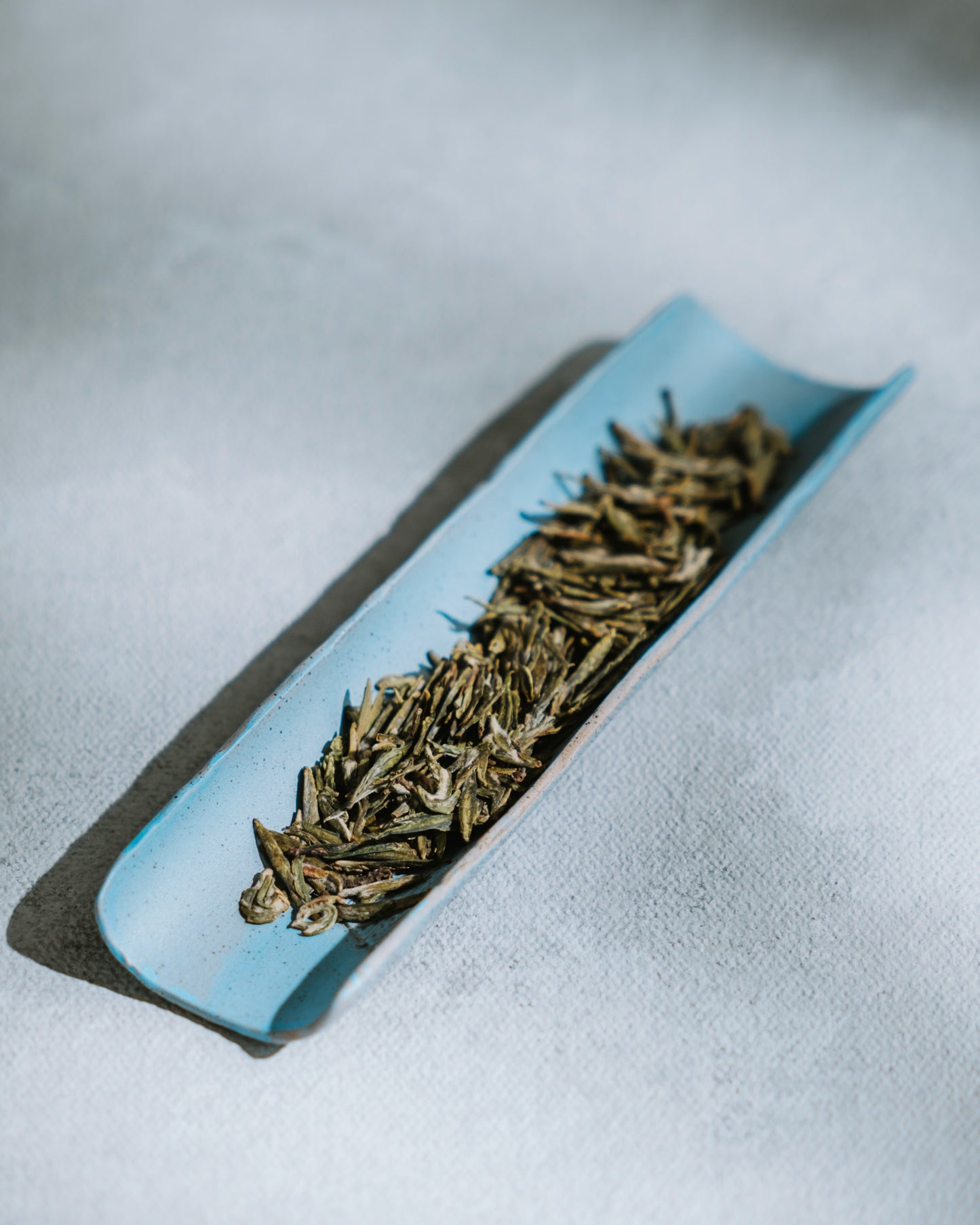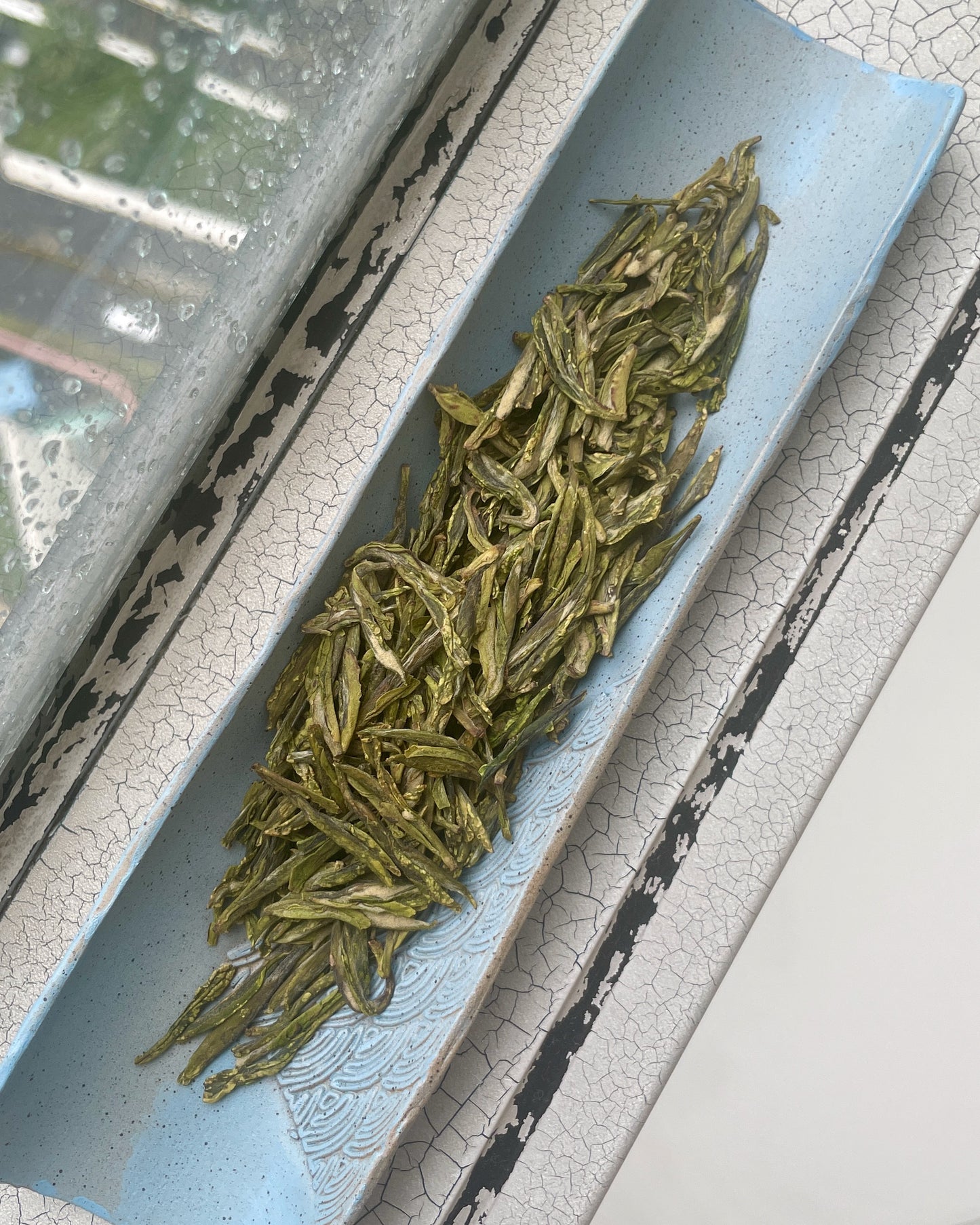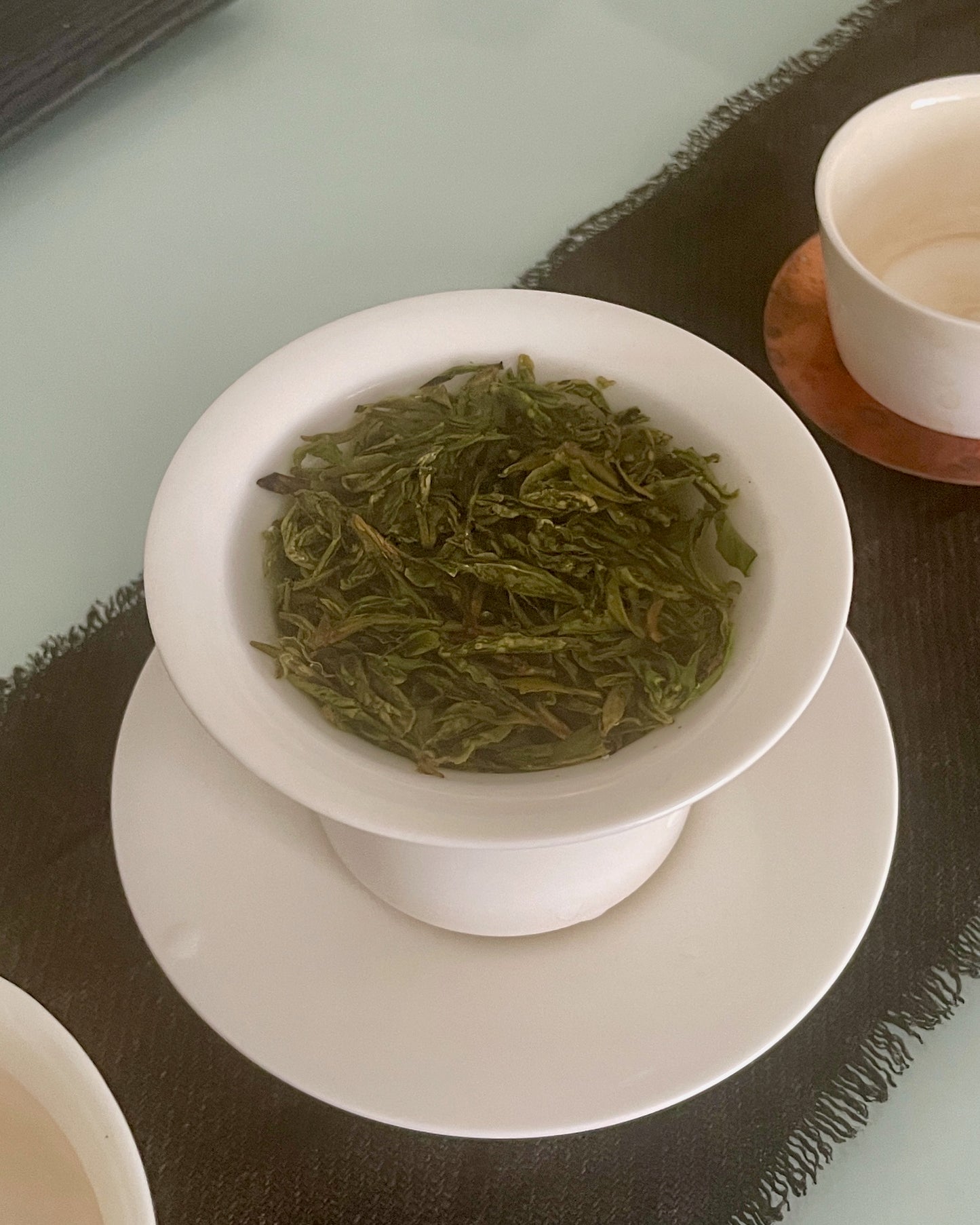Sushe Chaguan 宿舍茶馆
2025 Wild Dinggu Dafang ($1/g) - Work In Progress
2025 Wild Dinggu Dafang ($1/g) - Work In Progress
Couldn't load pickup availability
Origin: Shexian, Huangshan, Anhui
Cultivar: Local Huangshan small-leaf varieties (likely Shidacha 石台茶)
Processing: Handcrafted, reviving late Ming (Wanli era, 1573–1620) and early-to-mid Qing (Kangxi and Qianlong reigns, 1661–1796) tea-making traditions
Brewing Recommendation:
Gongfu (high ratio): 1:20 → 4g / 80ml, 95–100°C
Grandpa Style (low ratio): 1:50 → 2g / 100ml, 95–100°C
For brewing, these leaves thrive under more intensive steeping—use water just off the boil and longer steeps to unlock their full depth and complexity. Expect layers of structure, a refined body, and a lingering finish that reflects careful handcrafting.
While it performs beautifully in gongfu sessions, Dinggu Dafang also shines in a more relaxed setting—steeped in a bowl or a tall glass for a slow, unfolding brew.
Dinggu Dafang
Dinggu Dafang is one of Anhui’s most historic green teas, known for its deep heritage and meticulous craftsmanship. This limited-edition release, sourced from Master Lu, brings back the lost art of Ming and Qing dynasty tea-making—not just in technique, but in how these teas were originally meant to be enjoyed.
There isn’t much of this tea available even in China, and I’m the only one who has curated and brought it to Indonesia—so I can offer you the chance to acquire it.
Unlike many modern green teas that can have an overly cooling effect on the body, Dinggu Dafang offers a more balanced, centered experience.
This is a rare opportunity to taste a green tea made with time-honored methods—one that I’ve personally selected to share with you.
Note on Tea Culture in Ming & Qing
During the earlier Ming period, tea preparation still leaned toward whisked tea (a continuation of Song dynasty traditions). By the mid-to-late Ming, loose-leaf steeping had fully taken hold. This shift influenced the rise of the gaiwan as a preferred brewing vessel, particularly among scholars and the literati, who valued its elegance and precision in controlling infusion.
Tea in the Qing Dynasty
- Kangxi Era (1661–1722): A time of stability and cultural refinement, this period saw tea culture flourish alongside advances in porcelain and tea vessel production, including the continued popularity of gaiwans. Loose-leaf steeping became the norm, and tea was an integral part of court life.
- Qianlong Era (1735–1796): Often considered the golden age of Qing tea culture, this period saw imperial commissions for top-tier teas, with strict quality control in regions like Anhui. The emperor himself was deeply involved in tea appreciation, documenting his experiences in poetry and promoting more refined handcrafting techniques.
By this time, Qing-era production had further refined Dinggu Dafang's leaf shaping and processing, while preserving the core techniques of Ming craftsmanship. Slow-roasting techniques and meticulous leaf selection became standard practice, ensuring a smoother, more complex profile compared to earlier, rougher processing methods.






